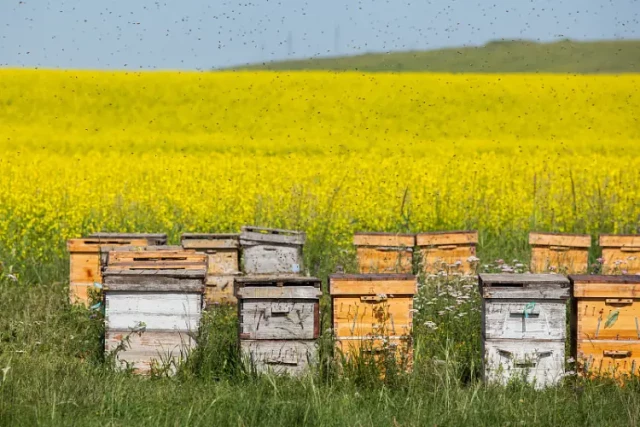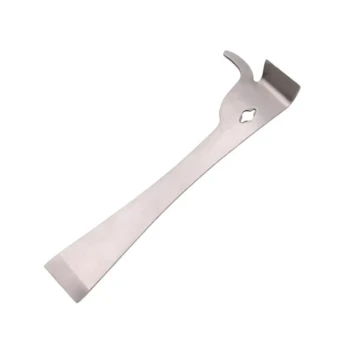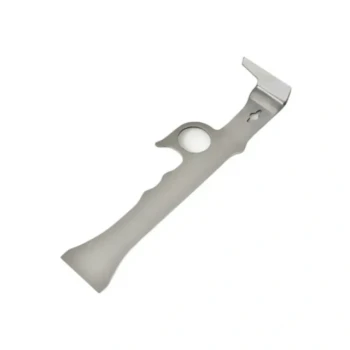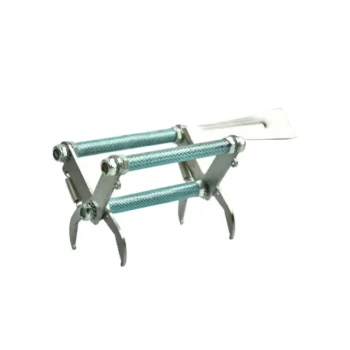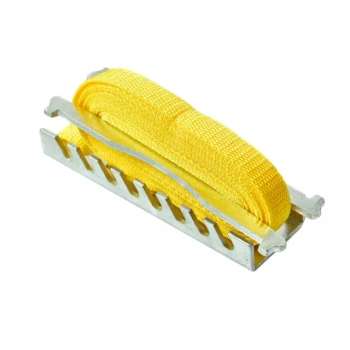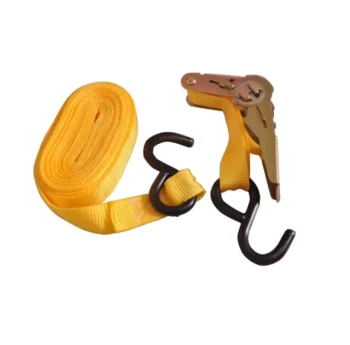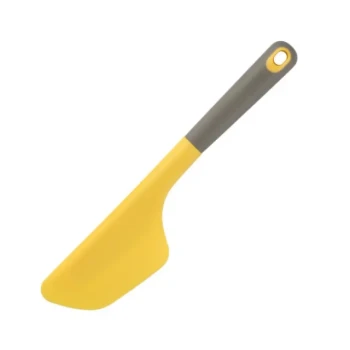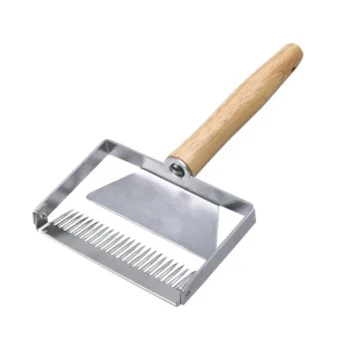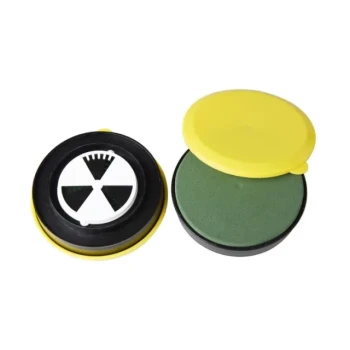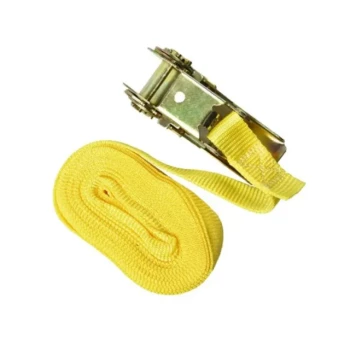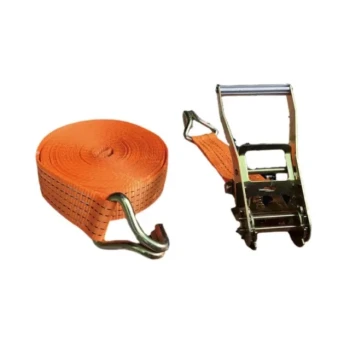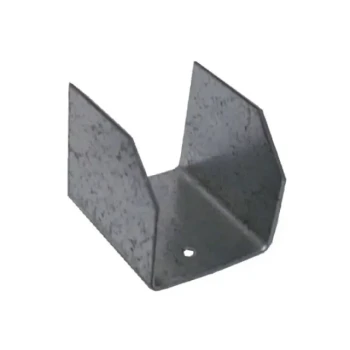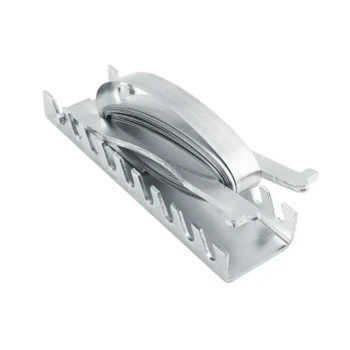Beekeeping success hinges on having the right tools for the right job—not just any tool. A well-optimized toolkit doesn’t just make inspections faster; it prevents hive damage, reduces bee stress, and streamlines your workflow. This guide unpacks how to match specialized tools to common challenges and build a damage-resistant system that keeps your colonies thriving.
Common Hive Challenges a Single Tool Can’t Solve
A flat pry bar might be your go-to for lifting frames, but it won’t efficiently scrape propolis from narrow corners or separate tightly glued boxes. Here’s where a one-tool-fits-all approach falls short:
- Frame separation: Aggressive prying can splinter wood or crush bees.
- Propolis removal: Blunt tools smear rather than clean, creating more work.
- Queen rearing: Delicate tasks like cell cutting demand precision.
Research shows that using mismatched tools increases inspection time by roughly 30% and raises risks of hive damage. For example, plastic foundations—common in honey businesses—are prone to cracking if scraped with excessive force.
Key takeaway: Diversify your toolkit to address specific tasks, not just emergencies.
Matching Tools to Tasks: A Guide to Specialized Hive Tools
1. J-Hook vs. Flat Pry Bars
- J-hooks: Ideal for prying frames without levering against the hive body (reducing wood stress). Their curved design fits snugly under frame lugs.
- Flat bars: Better for separating hive boxes but risk gouging if angled incorrectly.
2. Propolis Scrapers
Look for narrow, angled blades to clean frame grooves and box corners. Some beekeepers repurpose old kitchen knives—just ensure they’re dedicated to hive use to avoid contamination.
3. Drone Trap Frames
These specialized frames lure Varroa mites away from worker brood. Pair them with a uncapping fork to remove infested drone cells efficiently.
Pro tip: Brightly colored tools (e.g., blue handles) are easier to spot if dropped in tall grass—a simple trick to reduce losses.
Building a Damage-Resistant Workflow
How Redundancy Prevents Hive Damage
Carrying duplicates of critical tools like smokers or hive tools isn’t overkill; it’s insurance. Real-world scenarios where backups save the day:
- Rusty tools: A spare scraper ensures you’re not forced to use a corroded blade that could harm bees.
- Lost tools: Apiaries with washing soda buckets for tool cleaning (as some professionals use) let you quickly sanitize a backup.
Expert Tips for Organizing Multiple Tools
- Modular belts or aprons: Keep frequently used tools (e.g., J-hooks, brushes) within reach.
- Zoned kits: Store box-lifting tools separate from frame-cleaning tools to avoid cross-contamination.
- Weatherproofing: Straps or bricks secure hive covers during storms—a tactic noted in studies to prevent catastrophic hive breaches.
Daily life link: Just as a chef uses different knives for chopping and filleting, beekeepers need task-specific tools to work efficiently and gently.
Ready to Optimize Your Beekeeping Efficiency?
A strategic toolkit transforms how you interact with hives—reducing stress for both you and your bees. HONESTBEE equips commercial apiaries and distributors with wholesale-grade tools designed for precision and durability. Explore our curated range to build a toolkit that works as hard as you do.
Because in beekeeping, the right tool doesn’t just solve problems—it prevents them.
Visual Guide
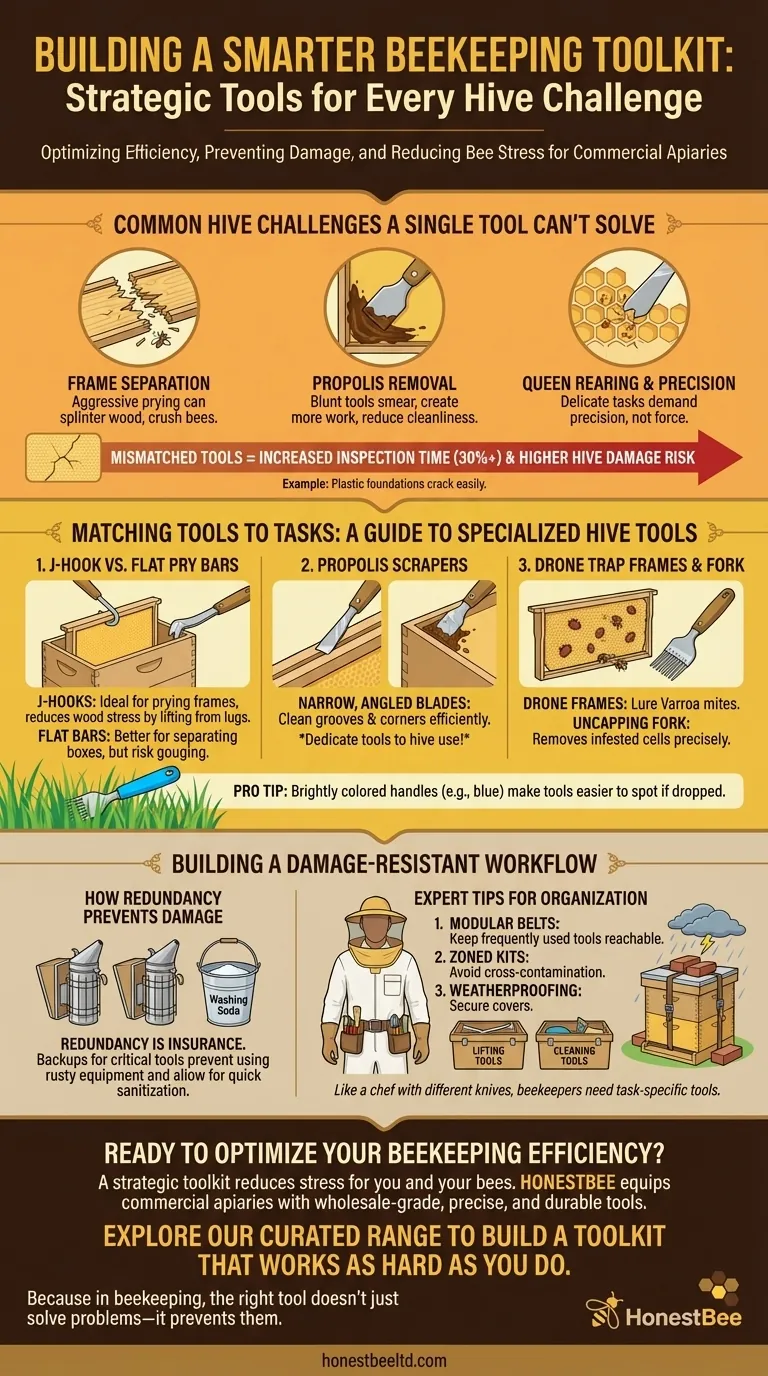
Related Products
- Professional Multi-Function Stainless Steel Hive Tool
- HONESTBEE Advanced Ergonomic Stainless Steel Hive Tool for Beekeeping
- Professional 3-Bar Frame Grip with Integrated Hive Tool
- Professional Galvanized Hive Strap with Secure Locking Buckle for Beekeeping
- Beekeeping Gloves Goatskin Leather with Long Cotton Sleeve for Beekeepers
Related Articles
- The Beekeeper's Strategic Guide to Queen Catchers: Hive Management & Safety
- How to Choose the Right Hive Tool for Your Beekeeping Needs
- How to Uncap Wax Like a Pro: Maximizing Honey Yield While Protecting Your Combs
- How to Master Essential Beekeeping Tools Safely and Efficiently
- The Essential Guide to Hive Tools in Modern Beekeeping
